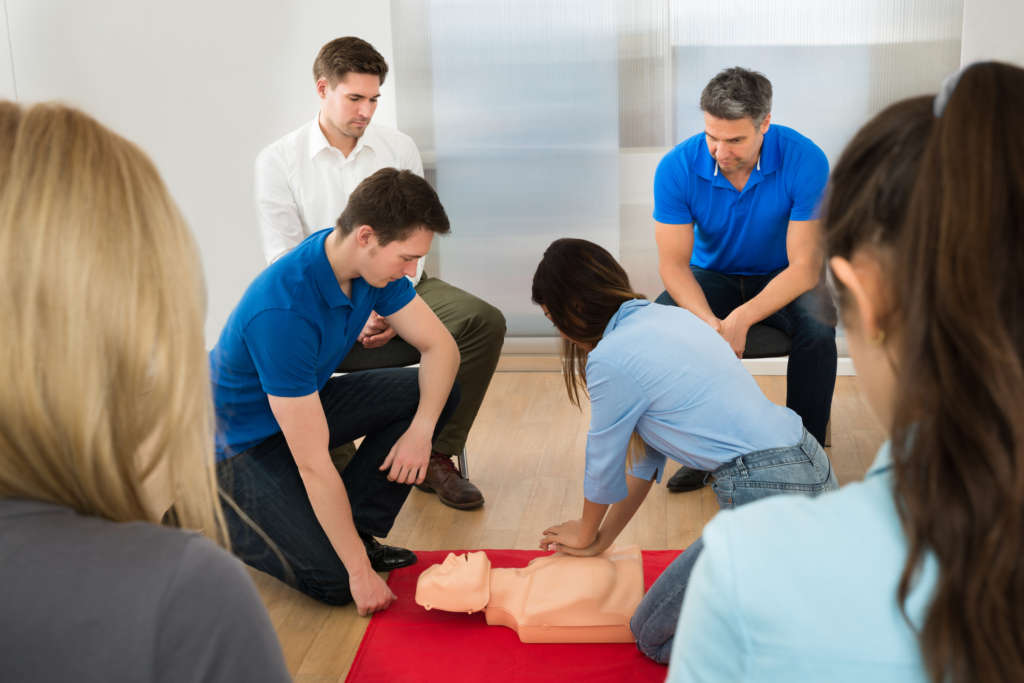WASHINGTON — Five years ago, Laura Metro came home to find her 3-year-old son lying blue and lifeless on the side of the pool.
While on vacation at the beach, the Potomac, Maryland, mother went on a run with her husband. Family friends took her two kids to the community pool.
“We were rounding the corner back into the development and my 6-year-old daughter [at the time] came running out of the pool, screaming ‘I think Clay died,’” Metro recalled.
“I didn’t know that’s what she was saying at first. I thought she was just trying to show me something, but then our other friend came out screaming, ‘Run, run, run. Drop the dog, run.’”
That’s when Metro came face-to-face with the helpless toddler, who was receiving CPR from a friend. When the paramedics arrived, Metro and her son were medevaced to a nearby children’s hospital, where her son remained in a coma for two days.
“We didn’t know if he would live or die. Let alone, if he lived, cognitively what would happen,” she said.
But Clay did live and miraculously escaped any major damage.
“The doctor’s really had no explanation for why he was OK. In the end, what they really attributed it to was bystander CPR. So our friend, who didn’t know CPR — he was just doing what he had seen on TV — if he hadn’t done that, they were pretty certain that Clay would have had a degree of cognitive damage that could be insurmountable and lifelong,” Metro said.
It took a while for Metro and her family to recover from the traumatic experience, and when she did, she couldn’t let go of something that was bothering her. It was CPR that saved her son’s life — it’s CPR that saves lives every day — but she, an educated Washingtonian and self-described neurotic mother, didn’t know CPR.
And she’s not the only one. The American Heart Association estimates that some 70 percent of Americans either don’t know or have forgotten how to administer CPR Two big reasons why are time and money.
“People don’t get certified in CPR because they don’t have $200 to $250 and they certainly don’t have five hours on a Saturday to go get certified, unless they are required to do so by their job,” said Metro, who became obsessed with finding a way to make CPR training more accessible.
A background in marketing — plus her own personal experience — helped her do just that. With her nonprofit, The CPR Party, Metro organizes gatherings that share a similar model to the traditional jewelry and Tupperware parties. Think: first aid meets Pampered Chef.
“It is a familiar format to anyone and everyone you speak to. So I thought to myself, maybe we can take out the shopping part and throw in some lifesaving skills,” Metro said.
Here’s how it works: Someone who is interested in hosting a CPR Party signs up with Metro’s organization. Metro, who partners with Rescue One, assigns an instructor to travel to the host site to teach a one-hour lesson on how to administer CPR in case of an emergency.
Attending a CPR party does not result in certification, but Metro says it does instill knowledge and basic skills so that an attendee would know what to do in an emergency situation.
“Of course certification is best, and we do encourage people to get certified, but if it’s not going to happen, it’s much better that people know something versus nothing at all,” she said.
Metro recommends a minimum of 10 people per party and a maximum of 20 people per instructor. (She can deploy more than one instructor for large parties.)
The cost for the instructor is about $300, or about $15 a person for a party of 20. However, Metro says cost should not stand in the way of organizing a party.

“If there is a financial hardship in anyway, do not let that stop you from signing up. Our goal is to train people. We want people to know these skills, and they should not have to pay for it to learn it,” she said, explaining that the nonprofit will pick up the bill in these instances.
“Your child, whether you’re in one socioeconomic bracket, is just as important as a child who’s in the 1 percent.”
Often, hosts of CPR parties will provide food and drinks to make the gathering lighthearted and social. Metro says she’s seen everything from catered fare with a theme, to pizza and sodas. (She does recommend saving alcoholic beverages until after the CPR instruction.)
And while she emphasizes the parties do not echo “a classroom environment,” there are a few requirements. For example, all participants must get a turn on the mannequin to practice compressions, and everyone must see and hear how an AED works. Learning how to administer the Heimlich to yourself and another person is also essential.
“You really leave feeling like you can save a life; you feel good,” Metro said.
Tips to prevent a drowning
While much of Metro’s work focuses on CPR education, she’s also active in drowning prevention — especially this time of year when minds shift to summer plans. The biggest points she promotes are what drowning looks like and how to avoid it.
“I had no idea that it takes seconds; I had no idea it wasn’t like in “Jaws” — they’re not flailing around screaming. They are paralyzed, silently sink — it’s done. It’s over before most people know it,” Metro said.
“And when someone drowns, it does not mean that the parents or the caregivers were negligent, at all.”
In fact, she says drownings take place all the time in guarded pools. Ahead of summer season, Metro offers some tips to keep in mind.
For starters, always wear a life vest in open water. She explains that if you’re on a boat and slip and hit your head before falling into the water, it’s much easier for someone to spot you and pull you out if you’re wearing a flotation device.
If you’re at a pool, take turns watching the kids with a group of friends. When it’s your turn, pull away from the group for 10 minutes; leave your phone and the conversation behind and focus on the water. When your time is up, switch with someone else. This way everyone can enjoy themselves and feel at ease knowing the kids are safe.
However, if an accident does happen, knowing CPR is one way to better the chances of survival.
“It’s been a long road, I’m not going to lie. But my child lived, and we’re grateful for that every day,” Metro said.






